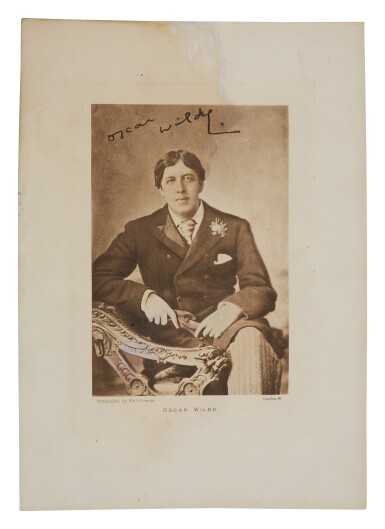Columbian Museum — Daniel BowenColumbian Museum, At the Head of the Mall, Boston...Large Historical Paintings...A Monument to the Memory of George Washington...Elegant Wax Figures...Automaton and Musical Clocks...Natural Curiosities...The Concert Organ. [Boston: D. Bowen, circa 1801] Letterpress broadside (584 x 464 mm). Woodcut coffin and urn decoration; minor losses in the margins at sheet edges not affecting text. An early American museum broadside A broadside advertisement for the Columbian Museum in Boston, and one of the earliest American museum publications extant. Opened by Daniel Bowen in 1795, the museum specialized in the exhibition of fine art as well as curiosities. The museum was an expansion of Boston's first such institution, also founded by Bowen in 1791, which was dedicated primarily to the exhibition of wax figures. The Columbian also played host to a variety of public performances and lectures. "One exhibit, more suggestive of P. T. Barnum than the sedate offerings of a modern museum, featured a bibulous elephant who consumed vast quantities of spiritous liquor, the museum's advertising assuring the public that 'thirty bottles of porter, of which he draws the corks himself, is not an uncommon allowance.' ...Despite such vulgarities, Bowen's Museum is said to have had a significant influence on the history of American painting. The works of art on display there, especially those of Robert Edge Pine formed the only public art gallery in Boston. Art historians credit this collection with influencing three major painters: Washington Allston the great Romantic painter, Samuel F. B. Morse, better known as the inventor of the telegraph, and Edward Greene Malbone a miniaturist of note, all of whom resided in the Boston area in the 1790s" (W.P. Marchione, Allston-Brighton Historical Society). This broadside advertises Bowen's wax sculptures of famous figures, such as John Adams George Washington, and Benjamin Franklin but further promotes a much more eclectic range of exhibited items. Prominently placed in the center of the broadside is an announcement that a "Monument to the Memory of General Washington has lately been erected in the center of the Museum," with a small woodcut purporting to be the object in question. Though several editions of advertisements for the Columbian Museum have been noted by OCLC, ESTC, and Evans, this particular broadside is apparently unrecorded.Condition reportCondition as described in catalogue entry. The lot is sold in the condition it is in at the time of sale. The
Columbian Museum — Daniel BowenColumbian Museum, At the Head of the Mall, Boston...Large Historical Paintings...A Monument to the Memory of George Washington...Elegant Wax Figures...Automaton and Musical Clocks...Natural Curiosities...The Concert Organ. [Boston: D. Bowen, circa 1801] Letterpress broadside (584 x 464 mm). Woodcut coffin and urn decoration; minor losses in the margins at sheet edges not affecting text. An early American museum broadside A broadside advertisement for the Columbian Museum in Boston, and one of the earliest American museum publications extant. Opened by Daniel Bowen in 1795, the museum specialized in the exhibition of fine art as well as curiosities. The museum was an expansion of Boston's first such institution, also founded by Bowen in 1791, which was dedicated primarily to the exhibition of wax figures. The Columbian also played host to a variety of public performances and lectures. "One exhibit, more suggestive of P. T. Barnum than the sedate offerings of a modern museum, featured a bibulous elephant who consumed vast quantities of spiritous liquor, the museum's advertising assuring the public that 'thirty bottles of porter, of which he draws the corks himself, is not an uncommon allowance.' ...Despite such vulgarities, Bowen's Museum is said to have had a significant influence on the history of American painting. The works of art on display there, especially those of Robert Edge Pine formed the only public art gallery in Boston. Art historians credit this collection with influencing three major painters: Washington Allston the great Romantic painter, Samuel F. B. Morse, better known as the inventor of the telegraph, and Edward Greene Malbone a miniaturist of note, all of whom resided in the Boston area in the 1790s" (W.P. Marchione, Allston-Brighton Historical Society). This broadside advertises Bowen's wax sculptures of famous figures, such as John Adams George Washington, and Benjamin Franklin but further promotes a much more eclectic range of exhibited items. Prominently placed in the center of the broadside is an announcement that a "Monument to the Memory of General Washington has lately been erected in the center of the Museum," with a small woodcut purporting to be the object in question. Though several editions of advertisements for the Columbian Museum have been noted by OCLC, ESTC, and Evans, this particular broadside is apparently unrecorded.Condition reportCondition as described in catalogue entry. The lot is sold in the condition it is in at the time of sale. The















Testen Sie LotSearch und seine Premium-Features 7 Tage - ohne Kosten!
Lassen Sie sich automatisch über neue Objekte in kommenden Auktionen benachrichtigen.
Suchauftrag anlegen